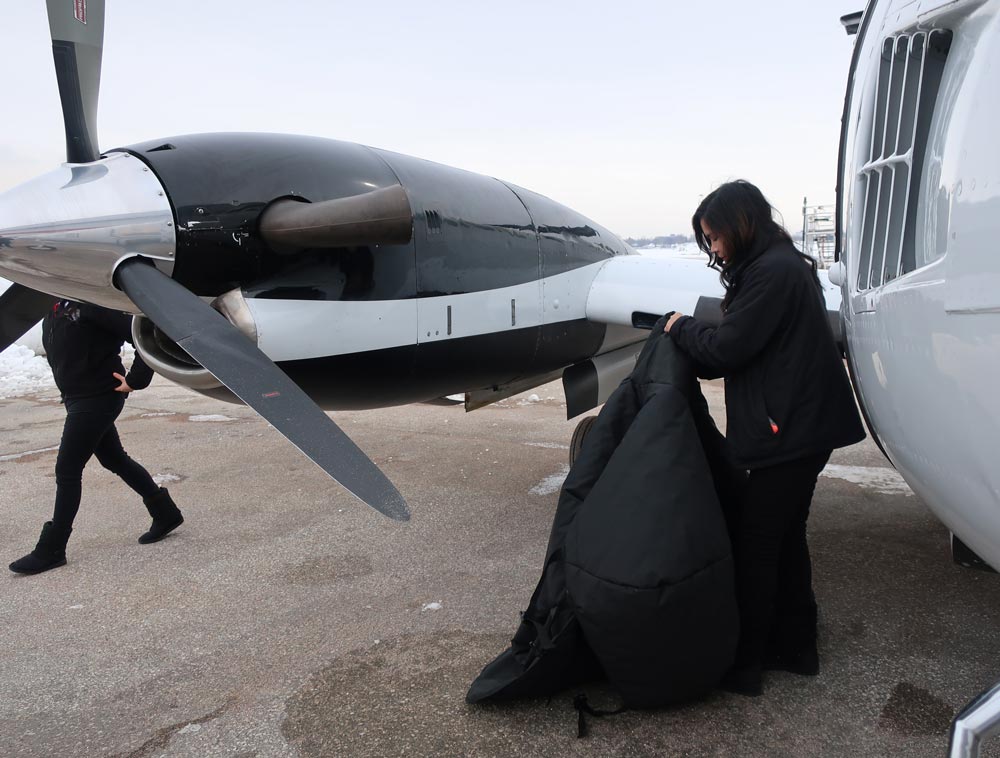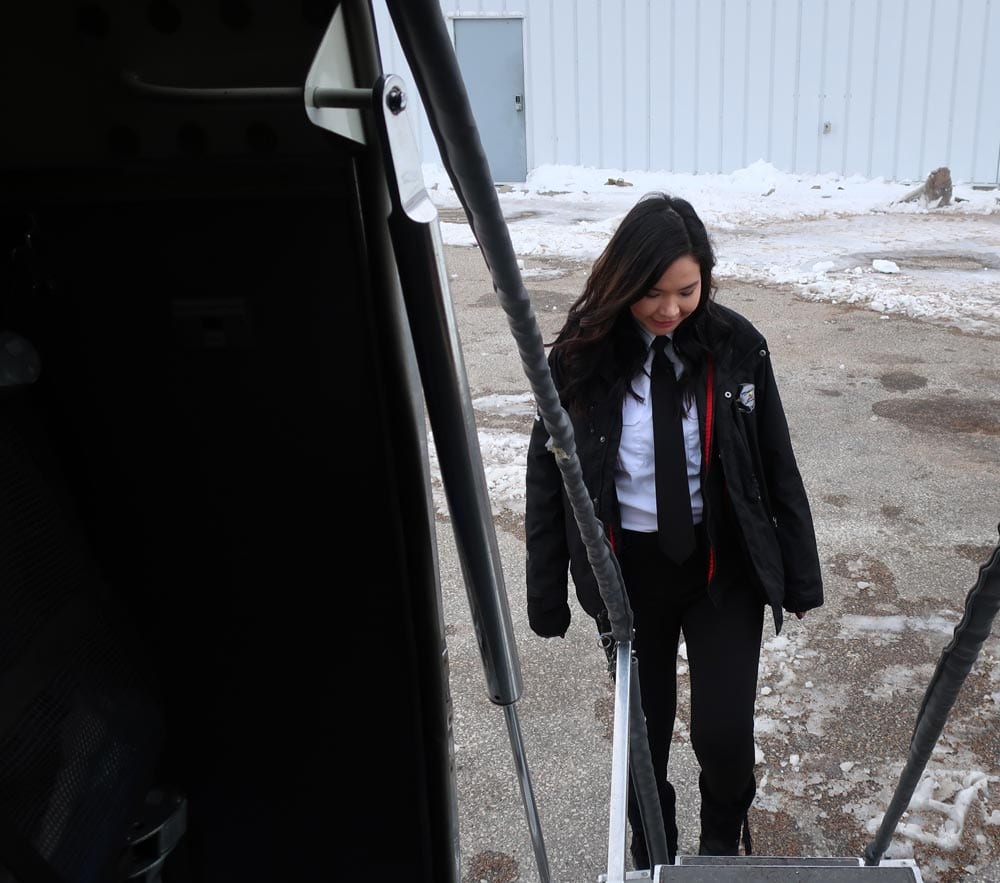Maternal pride and the power of social media helped propel two female pilots into the spotlight Wednesday.
“I said, ‘Mom, what did you do?’” said Capt. Robyn Shlachetla on International Women’s Day in Winnipeg.
“She said, ‘Oh. Just bragging about my kid.'”
The photo on Facebook of Shlachetla and First Officer Raven Beardy in the cockpit of a Missinippi Medivac plane was shared hundreds of times.
And prompted Missinippi Airways general manager Ricky Brenton to declare that stars had been born.
“You’re looking at the creation of a couple of role models,” he said of the first female Indigenous air ambulance crew in Manitoba – and maybe Canada.
“We’re very proud of them.”
The fact the team was introduced to the media on International Women’s Day was beside the fact.
“Nobody wears make-up. We’re lucky if we get a shower once a week,” said Shlachetla.
“Everybody thinks it’s so glamorous,” added Beardy, as she peeled the propeller covers off a Kingair 200 before taking reporters on a short flight over the city.

The two decide who’s going to pilot and co-pilot by playing Rock, Paper, Scissors, said operations manager David Coholan.
“There are seven female Indigenous commercial pilots in Canada. Three of them work here.”
Missinippi is owned and operated by the Mathias Colomb First Nation in northern Manitoba. It provides medivac and charter flights.
Shlachetla, who hails from the small northern Manitoba community of Wabowden, has been flying for 10 years. She says she grew up riding in her dad’s float plane and knew she would follow in his footsteps.
But she says her dream would have been grounded had it not been for him helping her with the $70,000 cost of flight school.
She says she worked two jobs, as well, because her band was unable to sponsor her.
Brenton hopes the success of this female team encourages more women to enter what he calls a “male-oriented and -dominated” field.
“It may help us recruit more youth,” he noted.
What Beardy, who comes from the fly-in First Nation of Shamattawa, joked was “glamorous” is shifts consisting of 13 days on and 13 days off.
“It’s pretty hands-on,” said Shlachetla of the small air ambulances that have room for a nurse, medical escort and stretcher.
Once they conquer challenging weather conditions to land on unpaved airstrips, the two get into remote nursing stations and help patients on board.

“It’s really rewarding taking care of people,” she added.
“Oddly enough,” though, “it’s the (female) nurses who don’t think we’re the pilots. I can be wearing a tie and full bars, and they’ll hand me the medical chart.”











Congratulations to the two flying “angels”!
Congratulations to the two flying “angels”!